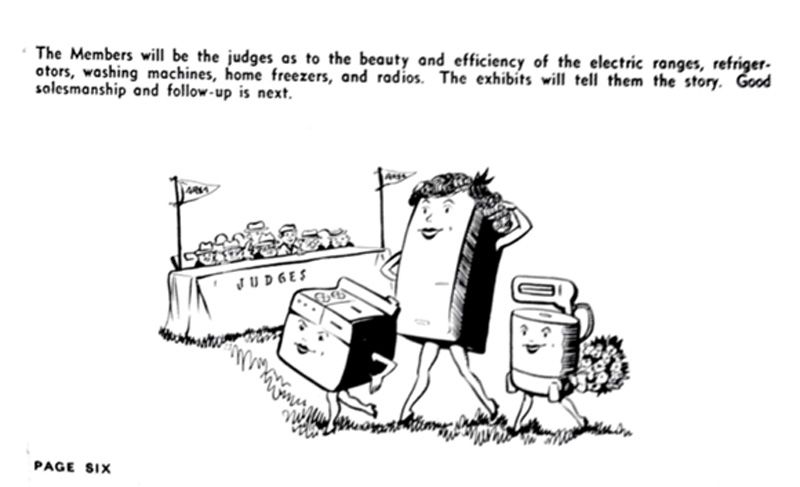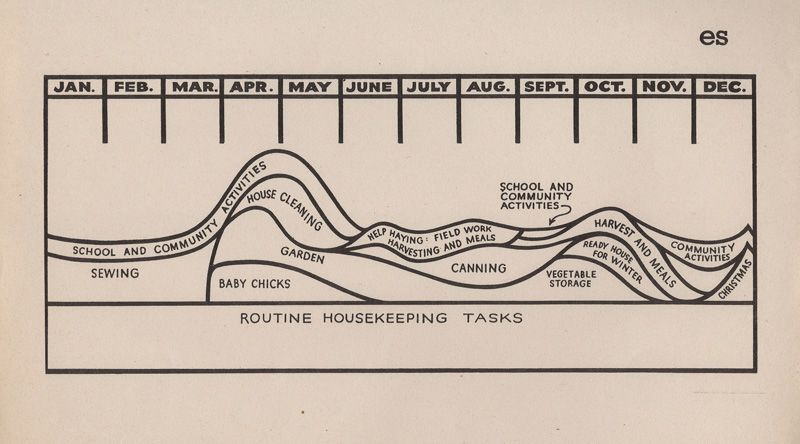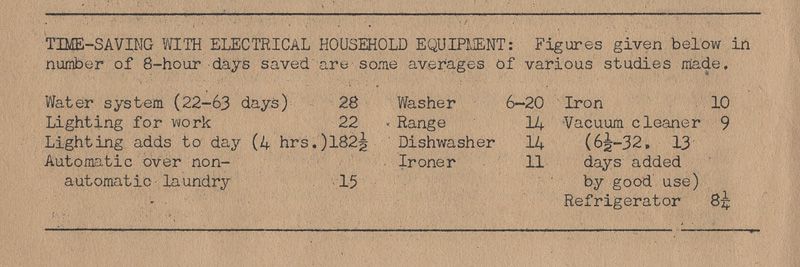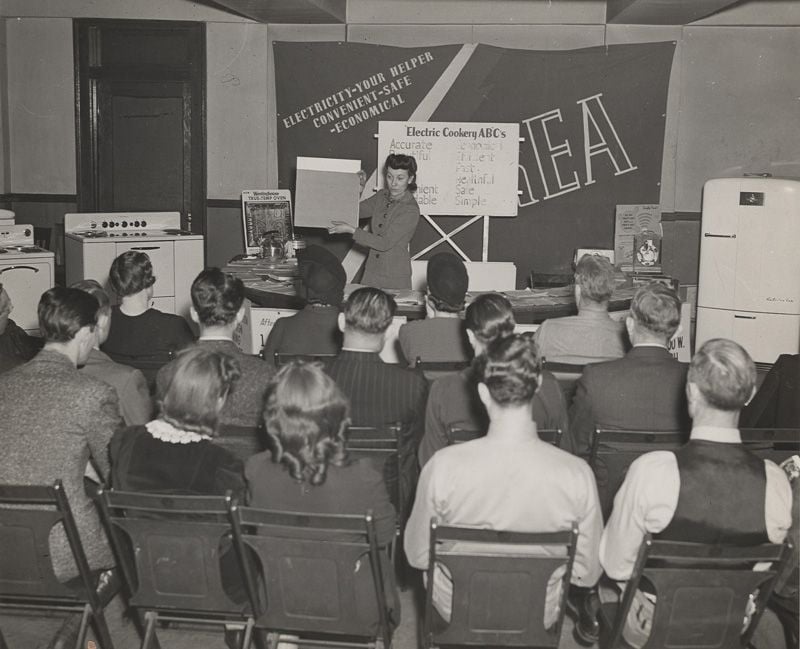NATIONAL MUSEUM OF AMERICAN HISTORY
What Do Refrigerators Have to Do With Women’s Empowerment?
For rural women in the mid-1900s, one force for change was an organization that few today would think of: the Rural Electrification Administration
:focal(484x179:485x180)/https://tf-cmsv2-smithsonianmag-media.s3.amazonaws.com/filer_public/50/3b/503bb454-2173-4809-a111-f0bb733c903d/nmah-ac0862-0000006.jpg)
Although women's empowerment can have a revolutionary effect on society, it doesn't always look like a revolution. Today, organizations like UN Women work to empower women in rural areas through economic programs that help them “claim their rights to land, leadership, opportunities, and choices” and “participate in shaping laws, policies, and programmes.” For rural women in the mid-1900s United States, one force for change was an organization that few today may think of as a vehicle for empowerment: the Rural Electrification Administration (REA). Clara O. Nale, who worked in home electrification during this period, remarked that rural electrification “has really started a peaceful revolution—particularly in the farm kitchen.” While Nale made this comment in reference to electricity’s transformation of the practice of homemaking, her words also describe how electrification efforts such as the REA expanded women’s autonomy and opportunities.
The REA was a government program created under President Franklin D. Roosevelt’s New Deal during the Great Depression, and its goal was to bring electricity to rural America. The REA provided loans to farmers so they could buy expensive electric appliances. In addition to the loan program, the REA tried to spark rural Americans' interest in electrification with educational outreach like the Electric Circus, a traveling carnival-like event to teach rural families about electric appliances. The effort was extremely successful, as the percent of electrified farms leaped from only 3.2% in 1925, to 90% by 1950.
The REA’s very first “home electrification specialist,” Louisan Mamer, was a pioneer for women’s leadership in this organization. Coming from a family that included 12 home economists, or professionals in the study of homemaking and family development, Mamer wrote in the magazine Practical Home Economics that her “background was, as astrologers would put it, propitious to home economics.” She grew up in Hardin, Southern Illinois, on a farm without electricity, where she did farm labor to pay her way to the University of Illinois. After graduating with a home economics degree in 1931, Mamer worked as a home economics teacher in DeKalb and then as a writer for the National Youth Administration, a New Deal program providing work and education for youth. In 1935 Mamer joined the REA. Her work, combined with the agency’s larger efforts to electrify rural areas, gave women across the United States new opportunities to work professionally and take on leadership roles.
It’s easy to overlook the many ways that the REA empowered rural women in midcentury America, in large part because the agency’s publications and advertising embraced conservative views of women’s identities and role in society. One telling quote published by the REA says that “the woman on an electrified farm, along with all the other women on farms and women in the cities of America, must plan to get all home tasks done with the greatest possible saving of time and energy.” The REA assumed that women on farms would be focused on "home tasks" rather than farm work or other employment.
Mamer faced these gendered expectations. She recalled in Journal of Family and Consumer Sciences that in college she switched from journalism to home economics, stating that “[she] thought [she] would have less competition from men in that field.” The concept of separate spheres continued in Mamer’s career at the REA, where women were the face of the REA at educational events, while few to no women were involved in the loan program or engineering work. Even though Mamer played a major role in the leadership and business practice of the Electric Circus, her published job description focused more on gendered public-facing responsibilities like women’s, youth, and community outreach.

Despite the REA’s outward support for conservative gender norms, the electrification movement created new opportunities and resources for Louisan Mamer and many other women. However, those efforts were biased in their concentration on white families and white communities. Many of the papers on the REA’s efforts do not mention race, ethnicity, or marginalized communities, and photos of the Electric Circus center white women and men. These omissions were just small symptoms of the larger, systematic ways that communities of color were excluded from the benefits of rural electrification and other New Deal programs.
For those who did benefit from electricity, one widely advertised purported advantage was time savings. According to studies highlighted by the REA, the use of electrical appliances for housework saved women months of work every year. Reality was much more complex as expectations of domestic work also grew with the new technology. Accounts like Ruth Schwartz Cowan’s book More Work For Mother suggest that having more technology encouraged doing more rather than less housework each day. Nonetheless, electricity diminished the demanding physical labor of housework, and many women did take advantage of time saved at home by taking on new opportunities. Within her archive, Mamer kept documents and communications from women who utilized their time savings for community volunteering, relaxation, or income-generating work, like starting their own home businesses or finding jobs outside the home.
The saved time and reduced manual labor of electricity may have also literally saved women’s lives. Mamer commented on this dimension of electrification in many interviews and other messages, one time telling readers, “Look in the old cemeteries and you'll see that there were maybe two wives for one farm man. This load of doing everything by heavy hand the hard way, and bearing a lot of children, was killing women far earlier than they die today.” Mamer’s claims are supported by studies that link electrification to lower fertility and reduced maternal and child mortality rates, promoting women’s autonomy over their physical and reproductive health.


Rural electrification also expanded the fields of knowledge available to women. To be able to use electric appliances in the home, rural women began to learn about science and electricity—fields often restricted to men at the time. Mamer’s college notebooks were filled with chemical equations, and she often included technical scientific information in her educational materials for women. One colleague even wrote to Mamer asking her to simplify the scientific information in her training lessons, for fear that it could cause “confusion” for home economists and the homemakers they instructed. Women both on the farm and in the REA began to apply this technical knowledge in their own homes, creating their own wiring schemes and, in some cases, designing their own electric appliances. Thus, while its original male leaders did not intend for the REA to expand gender roles, the organization increased both the professional and knowledge fields available to women.
Another step towards women’s equality in the REA came through an expansion of the female workforce into fields that were previously viewed as a male domain. Take Mamer as an example. While she described herself only as a home economist, Mamer actually helped design the Electric Circus–primarily a business enterprise. Through her work in the REA, Mamer expanded her professional areas of expertise through vigorous involvement in the business field.
Women’s efforts within the REA led to their increased professional recognition and leadership. Mamer advocated to an Illinois newspaper that women should serve on REA leadership boards, which was echoed by her fellow home economists in similarly public ways. REA female home economists also wrote to demand equal consideration for promotions from their male superiors. Mamer herself became a role model of women’s leadership in the REA. She was the first woman to receive the Clyde T. Ellis Award, named after the CEO of the National Rural Electric Cooperative Association, and she founded the Electrical Women’s Round Table. Even after her retirement in 1981, Mamer continued to serve on the leadership boards for many more years.

Both the REA’s work and Louisan Mamer’s professional life show that rural electrification empowered both professional and rural farming women in the mid-1900s. While today they may be mundane daily items, household electrical appliances count among the objects that have transformed American life. As institutions continue to work to empower rural women across the globe, stories like Louisan Mamer’s at the REA have been and may continue to be an important point of consideration.
This post was originally published on the National Museum of American History's blog on October 20, 2021. Read the original version here.
